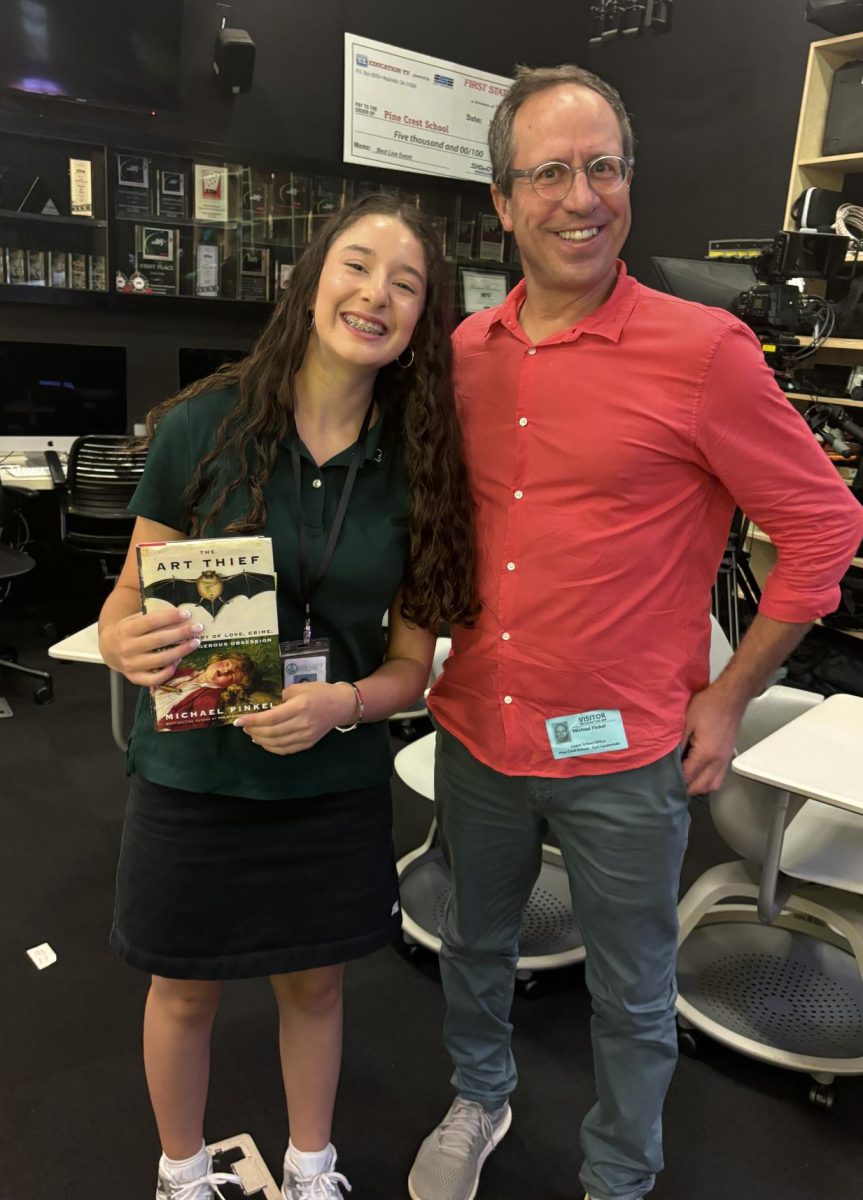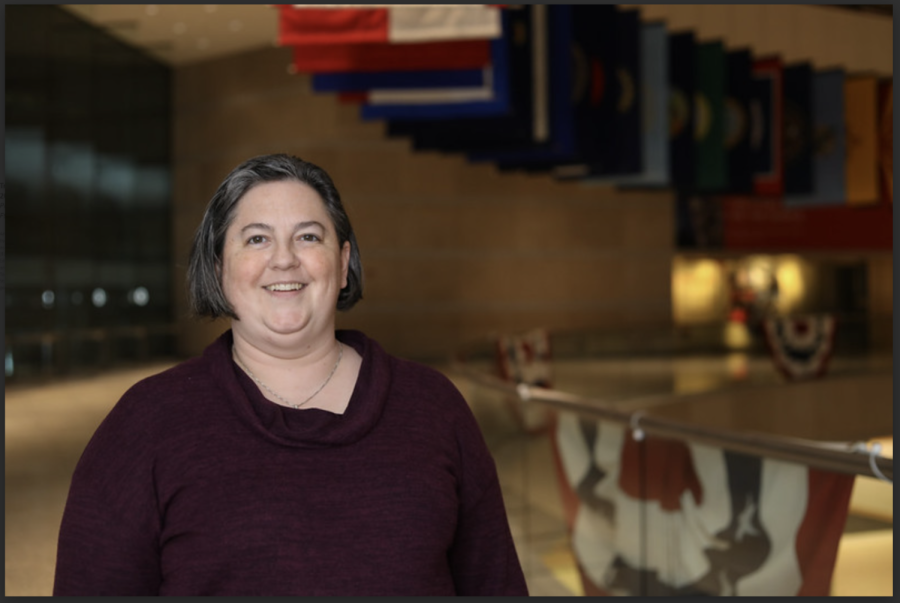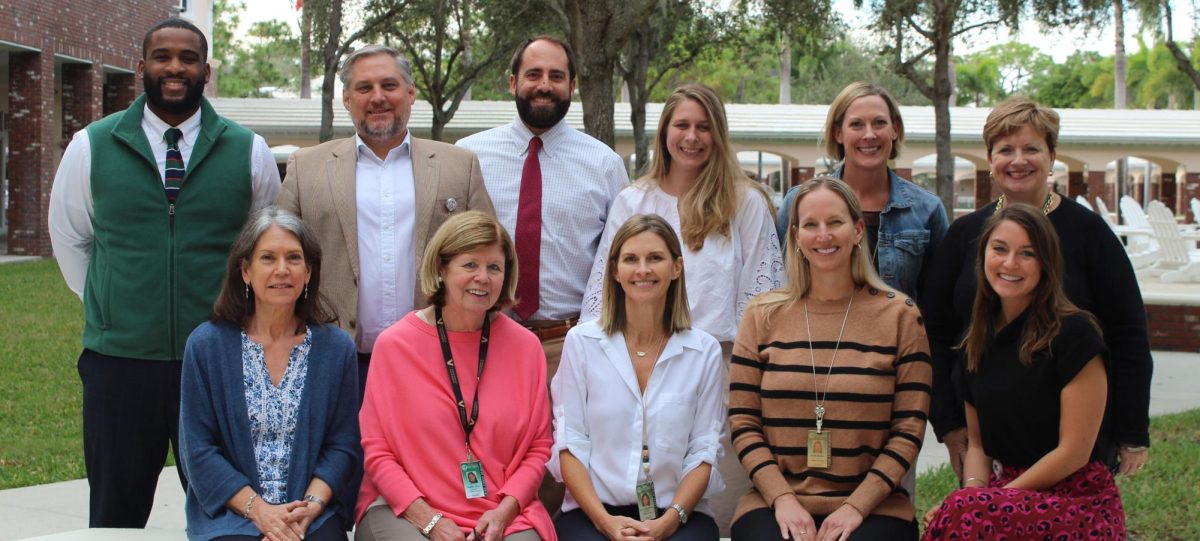Michael Finkel, true crime author, spoke to Pine Crest upper schoolers about his investigative novel, The Art Thief, on September 24th. As he spoke to students, they learned that writing about such unprecedented crimes is no easy feat. Students aspiring to a career in journalism were drawn to his presentation.
Dating back to Finkel’s adolescence, he always felt the desire to express himself through writing. Finkel said that he still keeps a diary to this day, as this is his outlet to “synthesizing thoughts.”
Beginning his journalism career at the New York Times, Finkel went against regulations when he created a composite character, combining a series of interviews into one for a project in West Africa. Following this, Finkel was fired by the New York Times. Although this initial setback was disappointing to Finkel, it did not hamper his expeditions within his journalism career. Even well-renowned authors like Michael Finkel undergo challenges in the early stages of their careers. Through it all, however, he believes that “it’s better to fail at something than to cheat.”
Following Finkel’s final stages at the New York Times, his experience in documenting true crime had just begun, upon receiving an unexpected phone call from Christian Longo. In addition to Longo’s reputation of murdering his wife and three children, he had taken the identity of Michael Finkel and was later imprisoned in the state of Oregon.
The popular maxim of “expecting the unexpected” was truly taken to the next level, as Finkel says that Longo would only speak to him.
“Even expecting the unexpected, I never expected a murderer on the FBI’s Ten Most Wanted list would tell everyone that his name was my name…no matter what you might think of as a journalism career, that is not something you ever prepare yourself for.”
Sure enough, Finkel found himself interviewing Longo to ultimately establish the novel and motion picture, True Story.
Following the documentation of Christian Longo among others, Michael Finkel applied the wisdom gained from prior experiences to help him document the crimes of the world’s greatest art thief: Stéphane Breitwieser.
From stealing Sibylle of Cleves in Baden-Baden, Germany, to the ivory sculpture of Adam and Eve at the Rubens House Museum in Antwerp, Belgium, Breitwieser’s unquenchable passion for art is truly unsurpassed in the art world. While Finkel understands Breitwieser’s idea of “liberating art,” he said it does not justify his actions.
“I’ve spent a lot of time in my career working with criminals, and they are filled with excuses. If everyone behaved like Stéphane Breitwieser, there would be no museums, there would be no modern society.”
However, as Finkel documented Breitwieser’s on-going tendencies, spending time with the world’s greatest art thief impacted his own perspective on art.
“He’s definitely a criminal and immoral,” Finkel said, “but he also had this incredible sensitivity to things he found beautiful. I found his reaction to something beautiful, kind of beautiful in itself. Spending time with the world’s greatest art thief made me appreciate works of art all the more.”
Through each literary expedition, Finkel embraces fear and uses it to his benefit.
“When I am scared, rather than trying not to be, I lean into that. Your senses heighten, you’re suddenly more observant, your hearing intensifies…”
Leading the way for future journalists, Finkel exerts courage in his everyday life, and continues to gain knowledge in each story he immerses himself in.



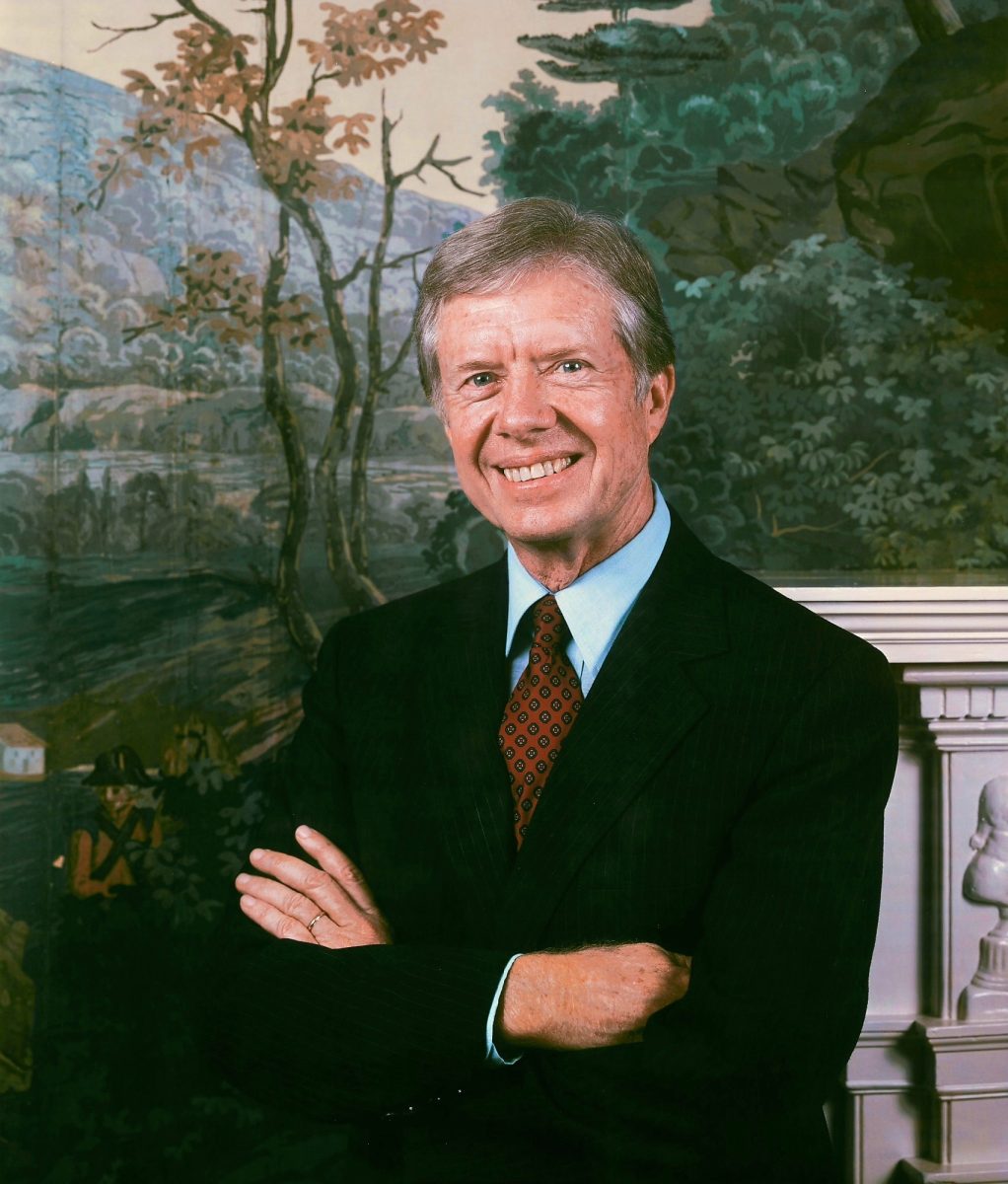


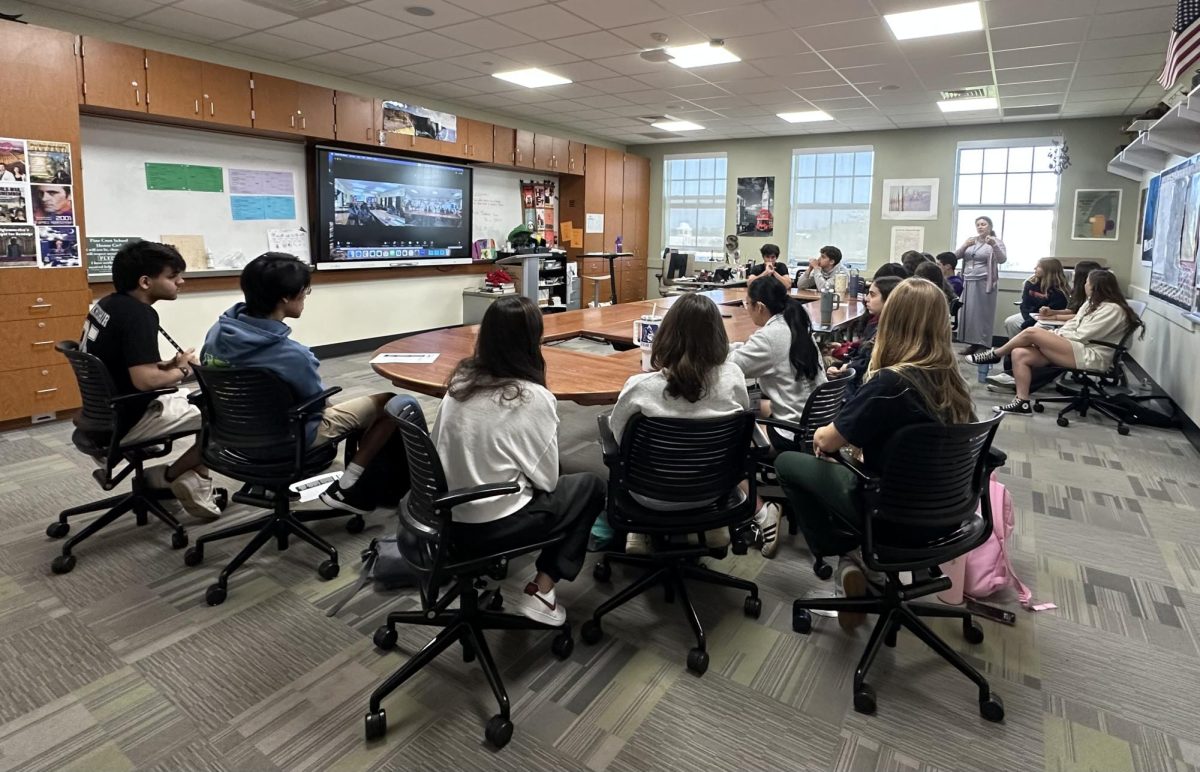

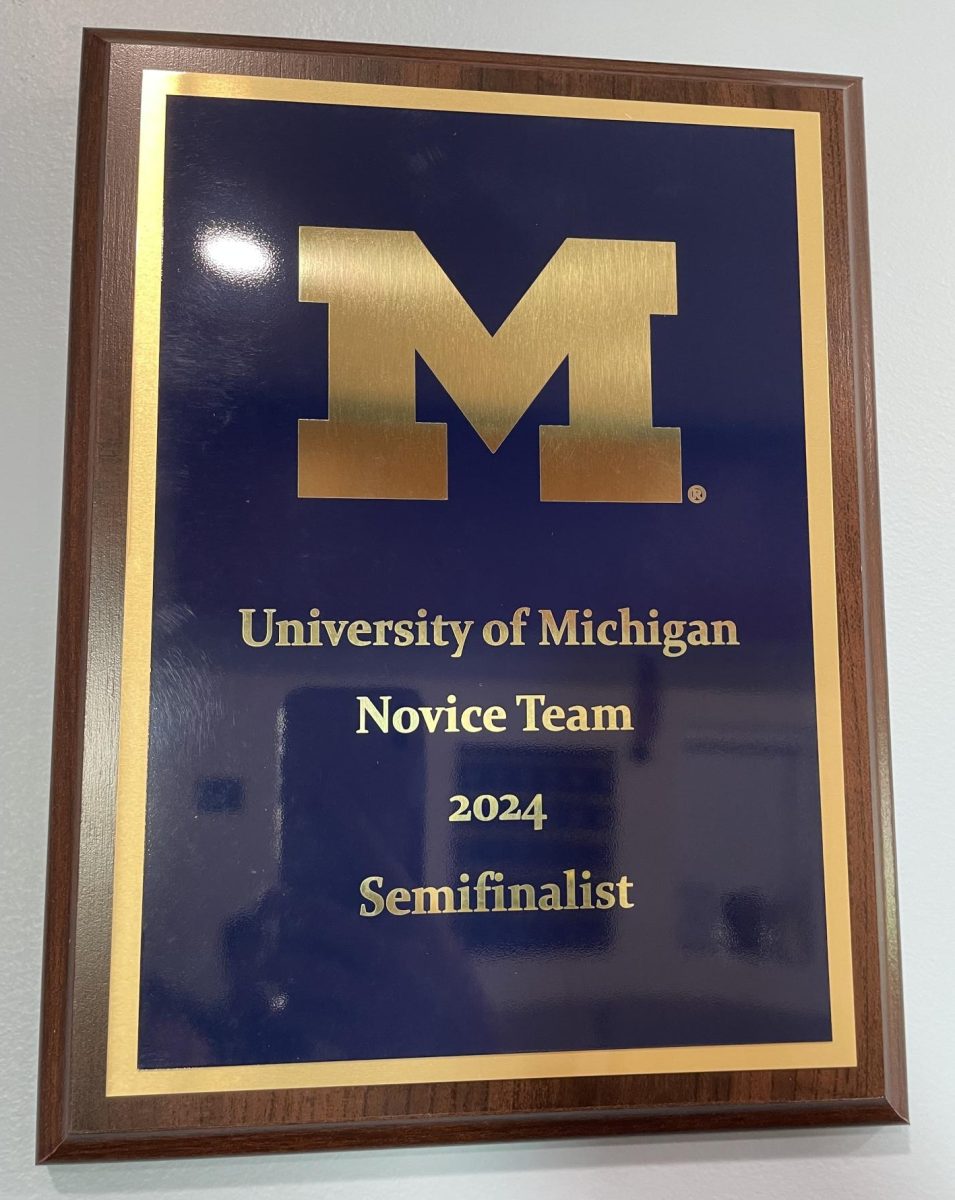


















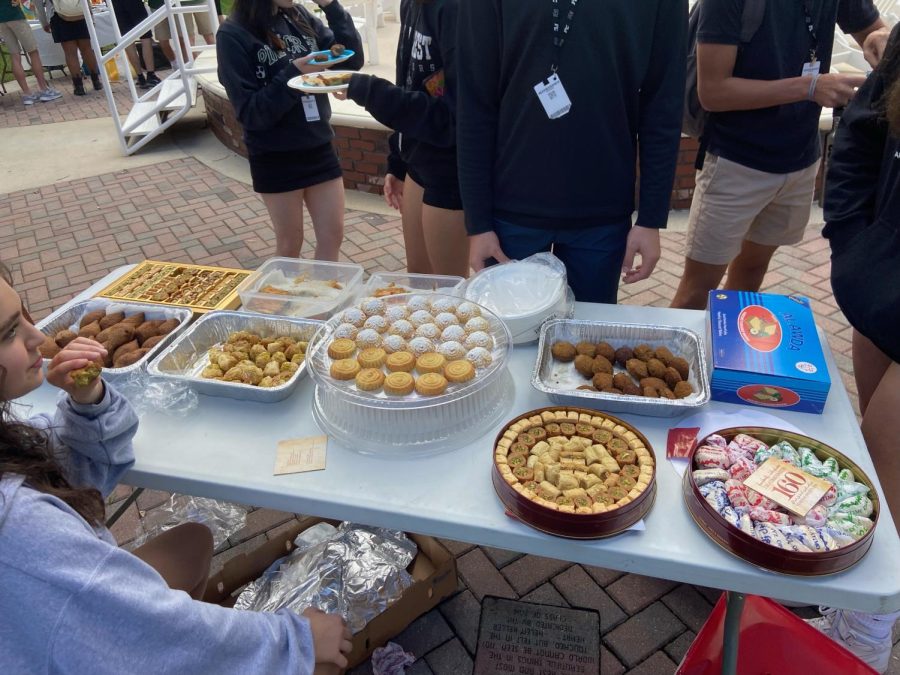
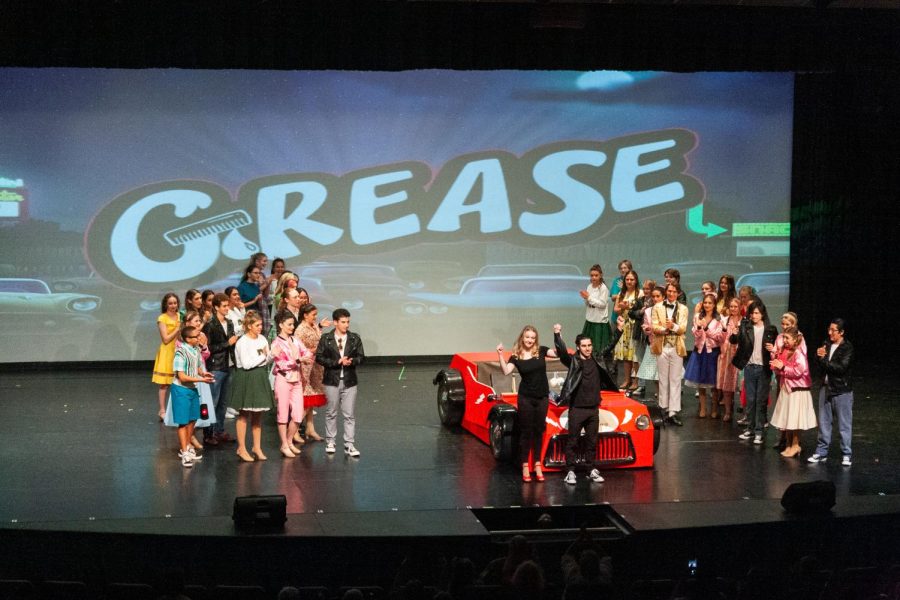




![Stranger Things 4: What to Expect [Warning: Contains Spoilers]](https://pcpawprint.com/wp-content/uploads/2021/11/StrangerThings4-900x473.jpeg)










































